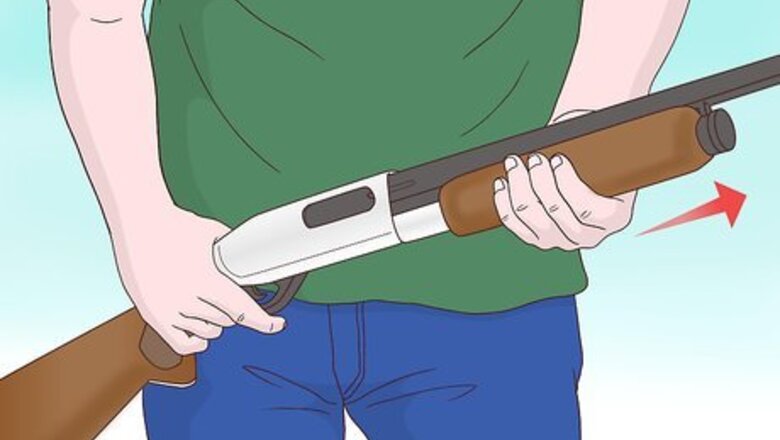
views
Unloading

Point the gun away from you. Always begin by pointing the gun in a safe direction, which is away from your body and anyone else in the room. If possible, clean your shotgun during times when you can do so alone, without anyone else around. Keep your finger off the trigger as you point the gun away from your body.

Press the bolt release on a pump-action shotgun. The bolt release is usually located in front of or behind the trigger guard. When you pull back the bolt release, the gun will empty one shell. Cycle the pump action and then repeat until there are no shells visible in the magazine tube or in the chamber. Pump-action shotguns have one barrel, but the magazine tube can hold multiple shells, so make sure you check thoroughly.

Pull back and release the bolt-grip on an auto-loading shotgun. When you pull back and then release, the gun will empty one shell. Continue repeating this action until there are no shells visible in the magazine tube or in the chamber. Make sure to double check the magazine tube, which could be storing multiple shells.
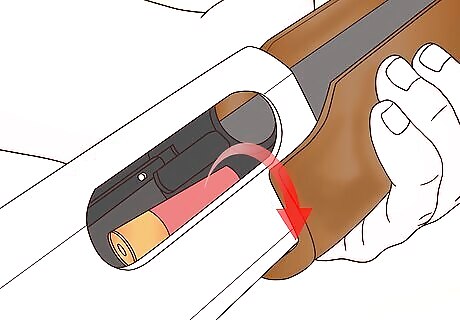
Open the hinge on a break action shotgun.The hinge is located between the receiver and stock. Remove the shell (most break action shotguns can only load one shell at a time) from the chamber end of the barrel and then close the hinge again. If your break action gun is a double barrel firearm, make sure to check both chambers for shells.
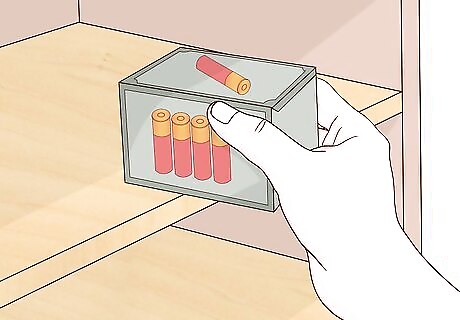
Remove all shells and put them in a safe place. Make sure to put the shells far away from where you are working – some people even recommend putting ammunition in another room while you're cleaning your gun, just to be absolutely safe. Double check to confirm you have removed all the shells from the magazine/tube. Put the bolt action button back in place to make sure there is no ammunition left in the gun.
Cleaning
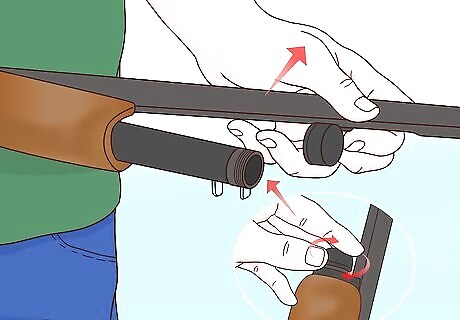
Remove the barrel. If you have a pump-action shotgun, twist off the end-cap located at the top of the pump, right next to the barrel. Sometimes the barrel will stick – if your barrel is sticking, slide the pump arm all the way down and then open the breach, which will release the barrel. Twist the barrel off away from the gun itself. For single-shot shotguns, take off the forearm and then remove the barrel. For semi-automatic shotguns pull the action all the way back. Unscrew the forearm cap and then slide the forearm off.
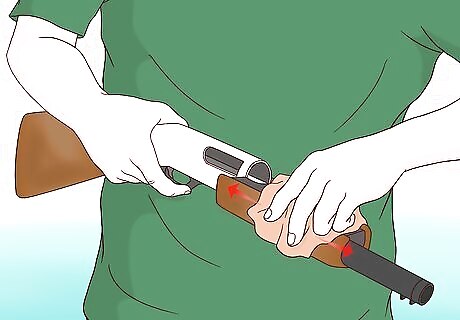
Wipe down all components with a clean cloth. Remove the thick, caked-on carbon buildup, which is created by the friction of use. Inspect and wipe carefully to remove any traces of old oil and all unburnt powder buildup. Clean all the gaps well. Be sure to wipe the ejector and the area around the chamber, too. You will find that after cleaning certain areas, your cloth will be black. Clean these areas more until this no longer happens.
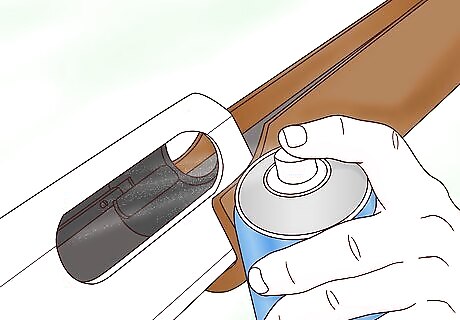
Spray solvent liberally on all components. It is better to spray more solvent than you need rather than not enough. Make sure to cover all areas and focus on those that are visibly caked with dirt and buildup. After generously applying the solvent, allow it to sit for 15 minutes so that the dirt and buildup are well-soaked. There are many solvent products on the market. Some are quite toxic, so be sure to read instructions and warnings on the bottle before using. If recommended by the manufacturer, use a face mask to reduce inhalation of toxicants and wear gloves. Some solvent products are safe for skin contact. If possible, look for these products and use those for your gun cleaning. M-Pro 7 is one such product.
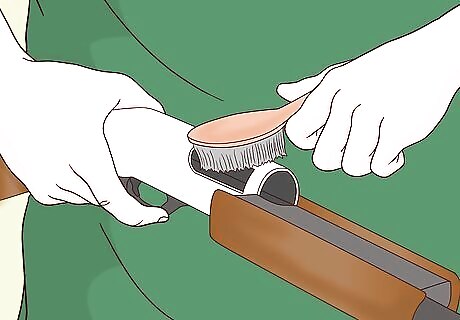
Scrub all over the surface of the gun with a soft-bristled brush. You can buy special brushes made for this, but a soft-bristled toothbrush will also work great. Scrub the surface thoroughly, working in the solvent, which helps loosen the buildup on the gun. Be thorough and try to get into all the nooks and crannies with your brush.
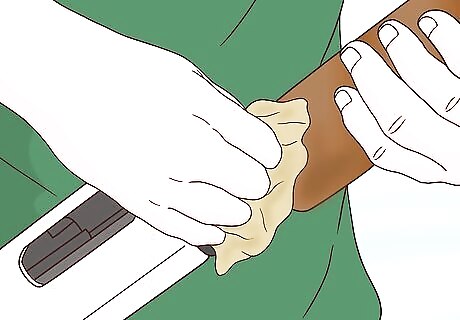
Wipe the gun down with a lint-free cloth. In this instance, a completely lint-free cloth allows for the most effective cleaning. Wipe the entire surface of the gun, removing all of the dirt and solvent. Concentrate on any areas that turn your cloth black and wipe until no more black appears.
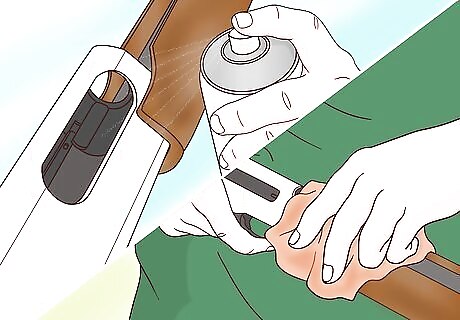
Soak the gun insolvent again. Spray the solvent all over the gun, just as you did before, and wipe it down thoroughly again. Concentrate on any areas that turn your cloth black and strive to get into the nooks and crannies. This second wipe-down will get the surface of your gun pristine.
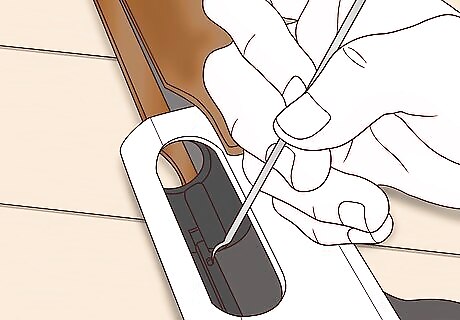
Use a gun cleaning pick to clean off any carbon and powder buildup. Gun cleaning picks are usually made of high-strength polymer, which will not scratch the surface of your gun. The most common area for carbon deposits is in the chamber, and the most effective way of cleaning this is with a pick. Gun cleaning picks are tools with different kinds of hooked and pointed ends designed to clean the really hard to reach areas of your gun. They look a lot like the dental picks your dentist uses during a routine tooth cleaning. Be sure to also clean in the corners and sides of the metal, since there are other areas where buildup often occurs.

Swab down into the barrel using a clean, solvent-soaked cloth. Use a cleaning rod to swab the cloth into the bore. Repeat this action with more clean, solvent-soaked cloths until the clothes come out with no visible residue on them. Then use a dry cloth to swab any remaining dirt from the barrel. Soak another clean cloth in oil and swab the barrel with this, which will protect it from rust. Instead of using a cleaning rod and cloth to clean the barrel, try a reusable foam swab made particularly for gun cleaning. This looks like a household Q-Tip except much larger, and you can remove the tip, wash it, and reuse it. For a less precise cleaning on a pump-action shotgun, run a bore snake through the barrel. This is a good instrument to use when your gun doesn't need a deep cleaning, but rather a quick touch up.
Oiling and Storing
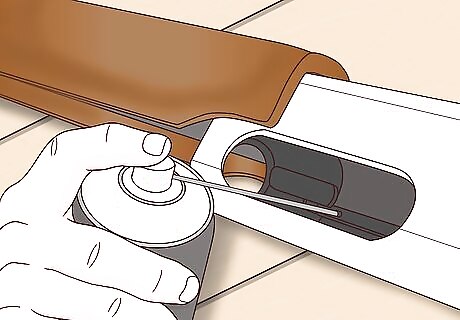
Oil the components requiring lubrication. Oil-requiring components vary from gun to gun, so check your gun manual for information about the specific areas that need oil on your particular firearm. If you don't have a manual, inspect the gun for the areas that have visible wear and apply the oil in those places. Oil aids in gun preservation, and you should use the oil sparingly. Be sure to oil the rails for the bolt and the bolt itself to prevent oxidation. Avoid getting oil around the housing and the firing pin, which can cause malfunctions and can prevent the gun from firing.
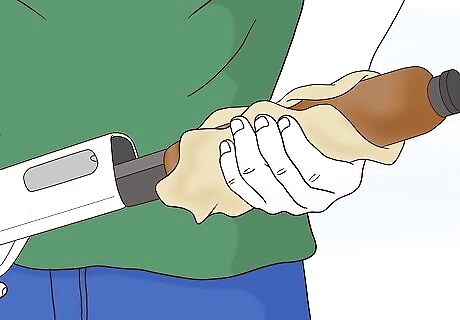
Wipe down the surface with a clean cloth to remove excess oil. If you accidentally got any oil on the wooden parts of your shotgun, immediately wipe the oil off with a clean, dry cloth. Gun oil can soften the wood, causing it to be more easily scratched and dented.
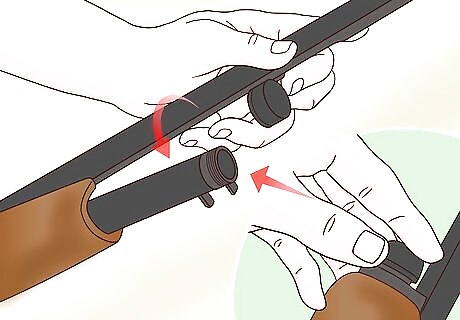
Open the breach and put the barrel back on. Twist back on the end cap and then close the breach, fully reattaching the barrel back onto your shotgun. Visually inspect the exterior for any remaining dirty areas. If you spot any, wipe with a clean, lint-free cloth. Always wash your hands after handling the gun and cleaning supplies.
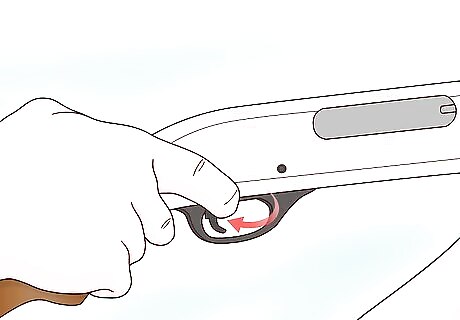
Do a quick test for functionality. Always do this before you reload the gun. Open and close the action, shoulder the shotgun, and take a moment to aim it at something and make sure everything feels right.
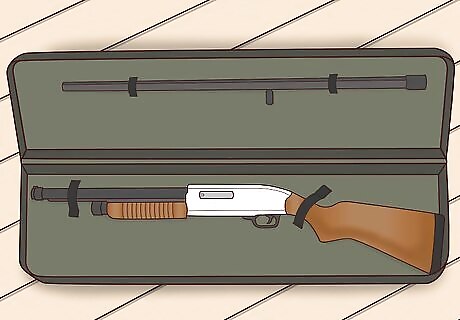
Store your gun in a hardshell case instead of a cloth case. Cloth cases will absorb the oil that you just applied to the gun, which could lead to rust. Put a packet of moisture desiccant in the case with the gun. This will help cut down on any moisture build-up while your gun is being stored.




















Comments
0 comment